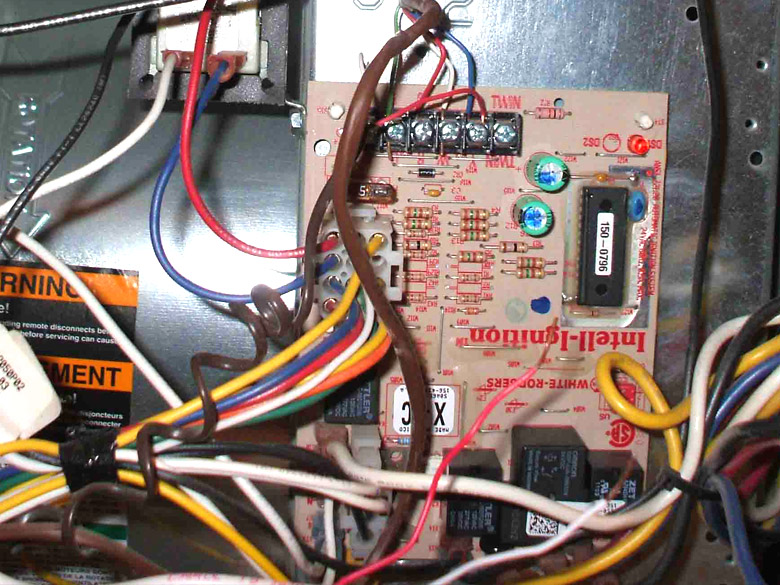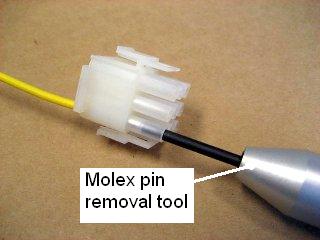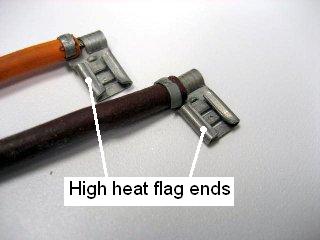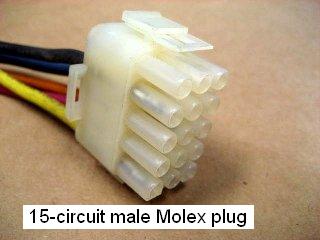
At first look, wiring inside a furnace appears to be basic wire & ends found at any hardware store. Take a second look, and you’ll see otherwise. Warning — shut off the power to your furnace before attempting any repair.
Furnace wiring must be rated to safely take the heat of a furnace. In many wiring diagrams, you’ll see notations saying something like, “If any of the original wire supplied with this unit must be replaced, it must be replaced with type 105C thermoplastic or its equivalent.” If you don’t know what you are looking for, trying to find “105C thermoplastic” wire will drive you nuts because the wire is now labeled differently.
The ‘equivalent’ wire these days is THNN or THWN because its rated at 105C. Also printed on the wire is a 90 (UL) rating, which can really throw you for a loop when trying to find the 105C. And in all honesty, the 105C may not even be printed on the wire. THNN/THWN high-heat wire can be found here. It’s OK to replace a smaller wire with a larger size, but never replace a larger wire with a smaller one.
The wire inside most modern furnaces is often connected using Molex plugs. These ‘wiring harnesses’ make it simpler to replace parts because all you need to do is unplug the old, and plug in the new. If a wiring harness becomes damaged, ordering a replacement harness won’t happen unless the furnace is only a couple years old. If you can’t order a new harness, the next best step is to repair the existing harness or build a new one.
Parts of a Wiring Harness
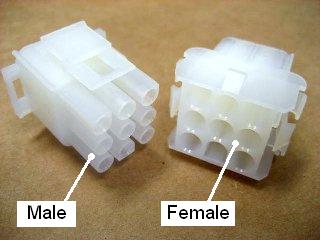 Molex Plugs: Molex is a brand name of wire plugs. Molex makes lots of different types of plugs. They make plugs for automobiles, furnaces, computers & other electronics. Keep in mind that each industry has its own size of plugs. For instance, Molex plugs used in computers are a different size than those used in furnaces. The size used in furnaces accept the .084″ pins. This size is universal among most all brands of furnaces. .084″ Molex plugs & pins can be found by CLICKING HERE.
Molex Plugs: Molex is a brand name of wire plugs. Molex makes lots of different types of plugs. They make plugs for automobiles, furnaces, computers & other electronics. Keep in mind that each industry has its own size of plugs. For instance, Molex plugs used in computers are a different size than those used in furnaces. The size used in furnaces accept the .084″ pins. This size is universal among most all brands of furnaces. .084″ Molex plugs & pins can be found by CLICKING HERE.
Molex plugs must be used in pairs. Each male plugs requires a female plug. A male plug will fit inside a female plug. The number of holes in a plug equals the number of circuits. However, some holes/circuits contain no wires. For instance, some 15-circuit plugs may contain only 3 or 4 wires. Don’t mix and match Molex plugs. For example, a 4-circuit male Molex plug will not fit into a 15-circuit female Molex plug.
Molex Pins: Again, the pin size for furnace plugs is .084″. The pins crimp to wire that’s 14 gauge or smaller. Like the plugs, pins also come as male or female. The male pins fit inside the female pins. Use female pins with female plugs, and male pins with male plugs.
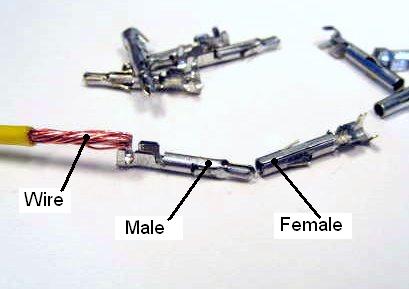 Wire: Most wire found in wiring harnesses is 14 gauge or smaller. Remember, the bigger the gauge number (also referred to as AWG), the smaller the wire. For instance, 16 gauge wire is smaller than 10 gauge wire. Most wire is also stranded, verses solid. Stranded wire will carry more of a load than solid. Do keep in mind that other wiring found in a furnace may be larger than 14 gauge, but it is usually for direct wiring (ie no plugs used). For instance, wire from a power source to an electric heating element may be a larger 10 or 8 gauge 105C wire.
Wire: Most wire found in wiring harnesses is 14 gauge or smaller. Remember, the bigger the gauge number (also referred to as AWG), the smaller the wire. For instance, 16 gauge wire is smaller than 10 gauge wire. Most wire is also stranded, verses solid. Stranded wire will carry more of a load than solid. Do keep in mind that other wiring found in a furnace may be larger than 14 gauge, but it is usually for direct wiring (ie no plugs used). For instance, wire from a power source to an electric heating element may be a larger 10 or 8 gauge 105C wire.
Assembly: Next, strip the insulation off the end of the wire and crimp the pin onto the wire. Each pin has 2 sets of crimps. The end set must crimp to wire with insulation, the middle set must crimp to bare wire. For an illustration of a proper crimp, view this PDF DOCUMENT by Molex.
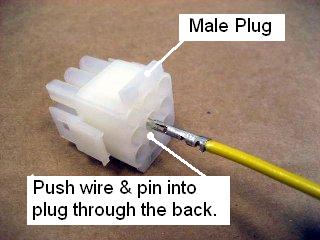 Once the wire is properly crimped to the pin, the pins simply snap inside the Molex plug from the back. The plugs connect together only one way, so be sure you have everything properly orientated before snapping in the wires. Once the wires are snapped into the plug, they are difficult to remove unless you have a special pin removal tool.
Once the wire is properly crimped to the pin, the pins simply snap inside the Molex plug from the back. The plugs connect together only one way, so be sure you have everything properly orientated before snapping in the wires. Once the wires are snapped into the plug, they are difficult to remove unless you have a special pin removal tool.
Generally (but not always), the wire colors in the male plug must match the wire colors in the female plug. Sometimes a plug will contain a jumper wire. Always consult your furnace’s wiring diagram, or look at the existing wiring. Be sure to clearly mark the location of any wires you remove from your furnace. I can’t tell you how many e-mails we get asking for help because the location of a removed wire wasn’t noted.
Other Parts
Wires that aren’t connected with Molex plugs are usually then connected with ends or terminals. These too must be designed for high-heat applications. If wire nuts are used, they should be ceramic or porcelain. Safety should be first and foremost when doing any work on your furnace’s wiring.
Click Here for Molex plugs and other furnace wiring parts.

